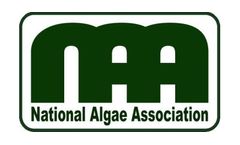Algae Based Technology Articles & Analysis: Older
9 articles found
Algae blooms can have a major impact on irrigation systems and cost producers time and money to clear clogged pumps, spray and drip lines, not to mention possible chemical application costs. WaterIQ Technologies™ and its partners specialise in environmentally friendly ultrasound technology for efficient and cost-effective solutions to combat harmful algae and biofilm. “WaterIQ helps ...
We are pleased to announce the latest installation of a 2750 L Phyco-Flow system for Grupo Fagro at their new Micro Algae Technology Development Unit, Biorganix in Ramos Arizpe, Mexico in conjunction with Novel Agricultural Bioactives from Microalgae (NAMBA) initiative. Our Phyco-Flow tubular photo-bioreactor will be used to cultivate microalgae species for the production of synthetic ...
The general public, taxpayers, and the business and investment communities continue to ask about the algae product claims made by university algae researchers, lobbyists, DOE Algae Biomass/BETO and market research studies. They have been promoting potential algae products since the first algae study conducted by Carnegie Mellon 75 years ago, and we’re now asking, with no response, where the ...
Algae are considered water pollutants because they form algal blooms in stagnant water. Algae harvesting technology, however, can help convert them into a useful industrial material like biomass. The core technique (flocculation) separates microalgae from other flocculants, allowing for the harvest of clean and pure algal biomass. This study aims to estimate and evaluate algal separation ...
Other than long overdue massive budget cuts, nothing has changed at the Department of Energy Algae Program. NAA has asked the DOE Secretary to review algae technologies giving private industry the opportunity to see if any algae technologies could be used in commercial algae production. While the DOE conducts advanced algal systems listening sessions, commercial algae producers are in commercial ...
On January 15, 2016, the U.S. Department of Energy (DOE) announced up to $15 million in funding for the development of algal biofuel intermediate technologies. Technology applicants should be likely to produce 3,700 gallons of algal biofuel intermediate per acre per year on an annualized average basis in an outdoor test environment by 2020. Applicants should also address a topic area within the ...
On October 2, 2015, at the 2015 Algae Biomass Organization Summit, the Algae Foundation announced a U.S. Department of Energy (DOE) funded education initiative to enhance algae workforce development. The Algae Foundation is a non-profit organization committed to expanding the algae industry though research, education, and outreach, and plays an important part in advancing the bioeconomy beyond ...
To tackle these issues, a laboratory scale greywater treatment system based on high rate algal pond (HRAP) technology was investigated in order to guide the operation of the pilot plant implemented in the 2iE campus in Ouagadougou (Burkina Faso). ...
More than half of that mass consists of lipids or triacylglycerides which are also found in vegetable oils and are used to produce such advanced biofuels as biodiesel, green diesel, green gasoline and green jet fuel. Algal remediation technology helps in pH correction of acidic mine water and effluent and complete reduction of sludge formation, the use of algae ...






